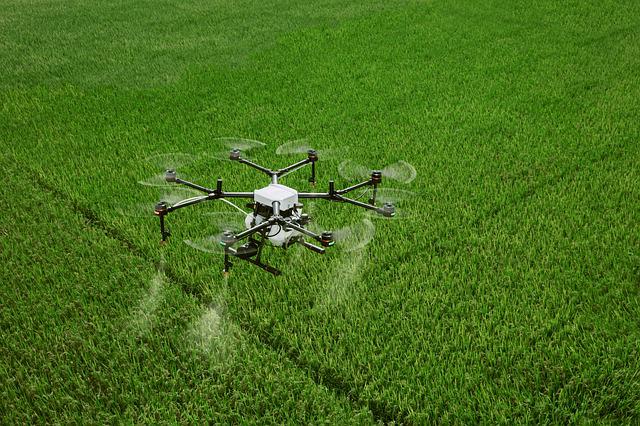We will analyze all the prospects of agriculture drones in this article and try to see what the future has in store. Agriculture drones are uncrewed aerial vehicles (also known as UAVs). Agricultural drones are used for management in various industries. They were still mostly operated by organizations working in industrial sectors such as building, the army, and amateurs.
India is largely an agricultural economy. Agriculture remainders the prevalent basis of earnings for the majority of rural households. India’s economizing is also laboriously conditional on agricultural produce. It includes a major part of its transport as well. However, the sector is always outlying back in technical advances, in spite of the mounting importance of agriculture.
Moreover, Indian farmers are even now hanging on monsoon rainfalls for crop irrigation. Farmers use age-old techniques for other farming practices. But sometimes the quantity and the quality of agricultural products are compromised in the malignancy of farmers’ ruthless struggles.
Thankfully, there is hope. What if crop downfall could be seen in advance? Can there be creative keys like agri-drones to plunge into the problems suffering the agricultural sector in India? Can drones become significant performers in the area of crop management, thus guiding to better probabilities of failure alleviation?
Also, read about Precision Farming. Modern Farming Methods. and Indoor Farming Technology.
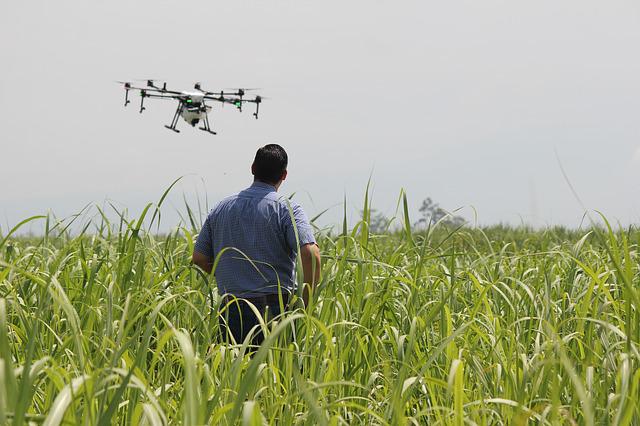
Why Adopt Agricultural Drones?
Drone technology has obtained most of the industry because of its assortment. It is believed the future of the agricultural society. When they discovered their overall applications, other sectors fast assumed UAVs ( unmanned aerial vehicles).
Here the question is how can agriculture drones support Indian agriculture? Not only do drones improve all-around arrangements but also heighten the farmers to crack other various obstructions. With the help of drones, farmers can obtain a mess of advantages through accurate agriculture. The drone survey allows for increasing crop yields and underrates time and expenditures.
The demand for agrarian drones getting a huge $1.3 billion. The UAVs reload the interval between efficiency and human mistake in traditional farming systems. The earned data allows restraining crop soundness, treatment of crops, crop searching, irrigation, and carrying out area soil estimation and crop crack estimates.
How Does Drone Technology Work?
Agriculture drones usually retain a shipping system, GPS, several sensors, high-resolution cameras, programmable switches, and instruments for independent drones. As an essential guide for farm management, the prevalences of farmers now use satellite imagery.
The UAVs merged with contemporary technology can obtain more authentic data for accuracy agriculture than satellites. To develop reasonable proficiency, they process the data captured into agri-tech software. So, here we represent four stages to capturing data from agriculture drones.

The following steps are involved in capturing data from agriculture drones in agriculture in India:
1. Analyzing The Area:
Therefore, the first step includes selecting a limitation and then interpreting the area, and ultimately installing the specialized GPS details into the drone’s seamanship structure.
2. Using Autonomous Drones:
Therefore, UAVs are self-sustaining, they enter flight techniques in their already installed system to gather necessary data.
3. Uploading The Data:
It is prepared by multiple software for further estimation and arrangement after grabbing all the directed data through detectors such as the RGB detector.
4. Output:
They format the collecting data so that farmers can comprehend the data with no aggravation. Therefore, 3D mapping is a popular method to show comprehensive data gathered.
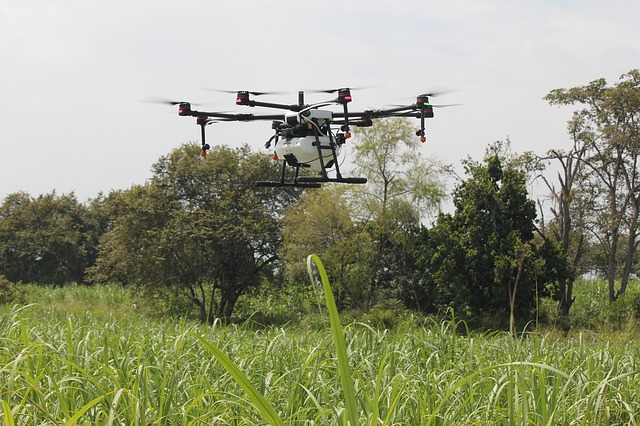
Best Drone Practices:
1. Crop Monitoring:
Drones, including multispectral or radiometric sensors, identify the areas that are too arid or require modification by the farmer to produce better products. Drone survey supports enhancing the high efficiency of water. To help recognize the soundness of crops and radiated energy, it reveals possible leaks in irrigation.
2. Soil & Field Analysis:
Agriculture drones can be operated for soil and area estimation for efficient area planning. They can be used to scale detectors to assess the landscape situations, the fecundity of the soil, soil corrosion, soil conditions, dampness range in the soil, and nutrient content.
3. Plantation:
Drones can help in growing plants and crops, which were produced by farmers earlier. This technology will not only preserve labor but also help in keeping energy. As they communicate toxic gases and degrade the surroundings in the method, it is expected that budget-friendly drones will be used rather than massive tractors.
4. Livestock Management:
Drones can be used to observe and manage huge livestock. The sensors of drones have high-resolution flaming cameras, which can swiftly take action consequently when they can catch a queazy animal. So, the effect of drones has become soon a new standard in accuracy dairy farming.
5. Check Crop Health:
Being a large-scale activity, agriculture drones brings areas over thousands of acres of land. Regular surveys are required to observe the soundness of the crop and the soil that has been produced. This may carry a few days, and actually, then, there is an area for human fallacy. Drones can gather all the details about both the soundness of the soil and the crop with the help of infrared mapping.
6. Crop Spraying:
As compared to traditional methods, agricultural drones can be used to spray chemicals on the crops in very little time as they have pools, which can be loaded with fertilizers and pesticides for spraying. Therefore, drone technology can show a new age for exactitude agriculture.
7. Avoid Overuse Of Chemicals:
Drones can confirm to be enormously useful in decreasing the too much usees of insecticides and pesticides. These chemicals definitely help to save the crop. But, their overuse can confirm to be harmful. Drones can notice minute signals of pest aggression. It delivers precise data regarding the scope of the invasion.
8. Geofencing:
The cameras are established over drones. The cameras can easily catch animals or human beings. So, drones can save fields from outward harm caused by animals, mainly at night.

Benefits:
1. Security:
Using drones is securer and more suitable for farmers to spray pesticides in terrain contesting to reach, taller crops, power lines, and infected areas. It also assists farmers to stop spraying the crops, which shows fewer chemicals in the soil.
2. High Efficiency:
Drones do not have any active hesitance. Drones can perform double the speed of human labor.
3. Enhanced Production:
The farmer can enhance mass production capacities by exhaustive irrigation planning, advanced learning about soil health, acceptable consideration of crop health, and transformation to environmental shifts.
4. Water-Saving:
Therefore, saving more water in differentiation from conventional spraying techniques, agricultural drones use ULV (ultra-low volume) spraying technology.
5. Low Cost & Easy To Maintain:
Agricultural drones are well made and low in cost. They require minimum supervision. Some of the essential components contain a low-cost structure, detachable container, and accurate spraying of pesticides.
6. Effective & Adaptive Techniques:
Drone gives the outcomes in frequent updates to growers about their crops. They help devise seasoned farming techniques. Without any wastage, they can adjust to climate situations and distribute help.
7. 10x Quicker Data For Quick Decision Making:
Allowing farmers to save the time invested in crop scouting, drones surveys back farmers with accurate data processing to make fast and conservative determinations. Therefore, various sensors of the drone allow seizing and examining data from the complete area. The data can concentrate on difficult areas such as unhealthy or infected crops, crops with different colors, moistness levels, etc.
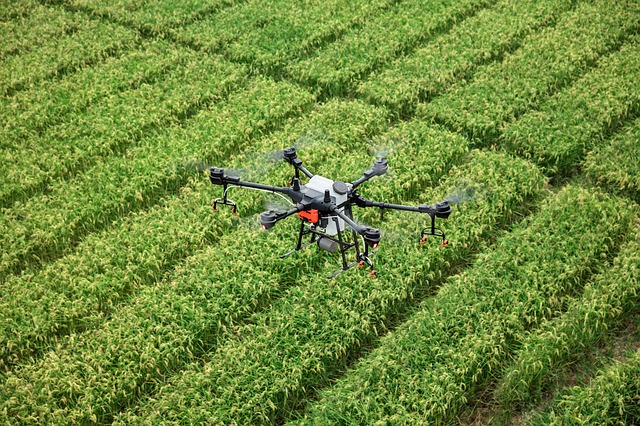
Limitations:
Drones are spreading the atmosphere to farmers who want a more pleasing method to watch their crops. Therefore, flying a drone over a field is less labor-intensive than walking through one. Using a drone in accurate agriculture always brings too much time and struggle for farmers to use.
1. Connectivity:
Therefore, in the US, most of the cultivable growing crops have very little online range. This suggests that any farmer has to finance connectivity for planning to use agricultural drones. Or they can purchase a drone competent for catching and accumulating data sectionally that can later be prepared.
2. Weather Dependent:
Unlike traditional aircraft, drones are much more dangling in climatic situations. Because of some ricks, you may not be able to fly them when it is extreme weather or rainy outside.
3. Knowledge & Skill:
An intermediate farmer may need training in drone maintenance, piloting, and programming. Because drone technology is doubtful to be expected by common people when data processing will require help from a fellow association.
Drones are always too difficult for farmers to use on a frequent base. Drone mechanization is time-consuming, especially for extensive saleable farms that have thousands of acres of land.
4. Interference Within The Airspace:
Agricultural drones share the same airspace as standard operating aircraft. Therefore, they are tending to interrupt. Hence, it’s suitable for the farmer files a flight plan with the local airport.
5. Flight Time And Flight Area:
There are some problems with using drones in agriculture. Most agricultural drones have a quick flying tour. This may not be compelling in watching a very extensive acreage. The flight capacity also determines the radius that can be protected during every flying time. Some of the drones are fairly more costly and are created to observe longer flight times and longer ranges.
6. Heavy Cost For Good Feature Drones:
Agriculture drones with reasonable format and parts are quite expensive for use in agriculture. This is mostly so for adjusting wing drones like PrecisionHawk’s Lancaster could cost up to $25000. Therefore, the heavy cost of some agricultural drones is comprehensive of software, hardware, data programming, instruments, and imaging sensors.
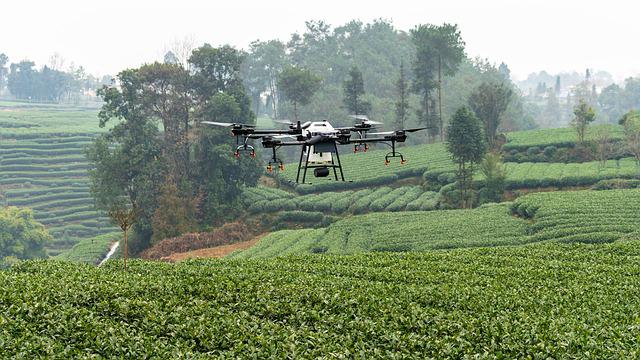
Use of drones in agriculture in India:
Agriculture drones are uncrewed aerial vehicles also known as UAVs. Agricultural drones are used for the management in various industries. They were still mostly operated by organizations working in industrial sectors such as building, the army, and amateurs.
But now, drone technology is more and more unrestricted for use in various agriculture sectors as well. It is still nascent in India, many organizations are stretching so that it is smoothly available to Indian agriculturists. It is ready to be used to improve productivity in agricultural production.
How To Buy An Agricultural Drone In India:
According to industry sources, a made-in-India agriculture drone for spraying costs about 4 to 5 lakh. The imported ones are 20% cheaper. Therefore, various Indian drone factories are creating drones for agricultural intentions. You can find many agricultural drones online along with generalizations counted for considering and completing an investment determination.
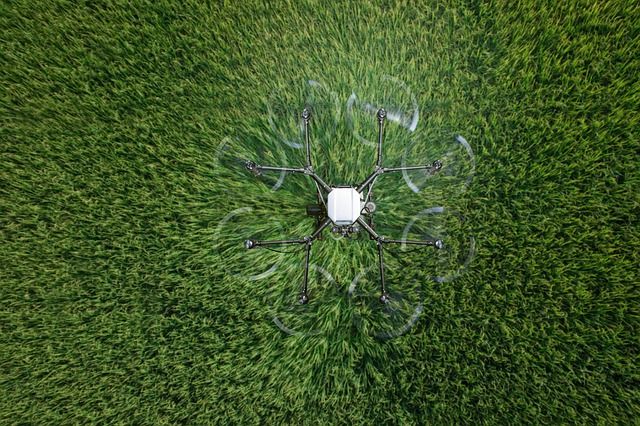
Conclusion:
Examining different into the future, drone technology is moving to transform the agriculture sector. Many Indian startups are indicating attraction in the industry and aim to infuse low-cost agriculture drones. For the rural youth, it can help the farmers and concomitantly construct career opportunities. So, it can improve the knowledge of farmers as probable.
Keeping in mind the growing population, the industry requires mature reforms, the needs of the farmers, the reserved farmlands, and work procedures. Moreover, tendencies pilots are required to take forward the still original drone market. Overall it would be interesting to see how things are going forward, and how reasonable the mechanization of operating agricultural drones arises to be in the extended run.
